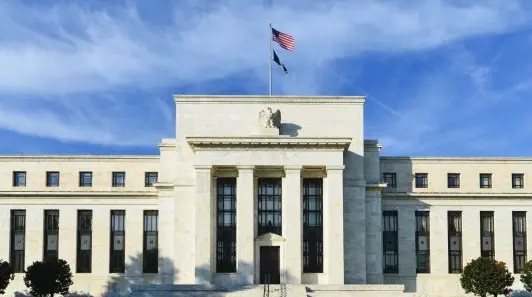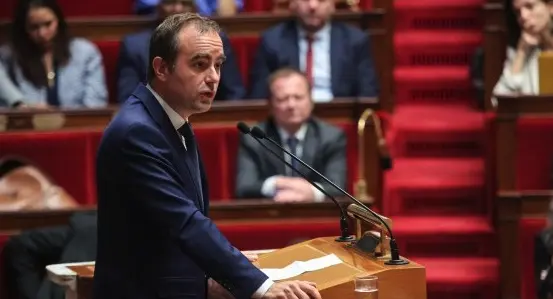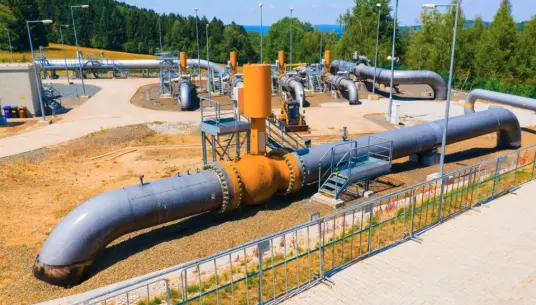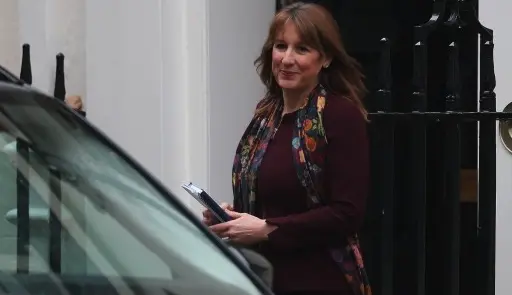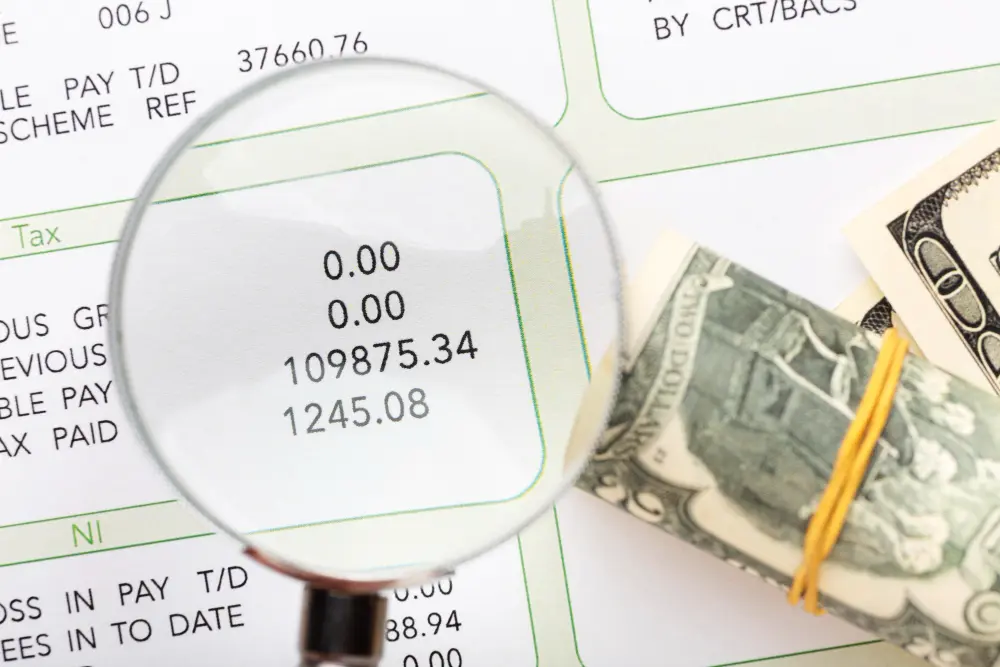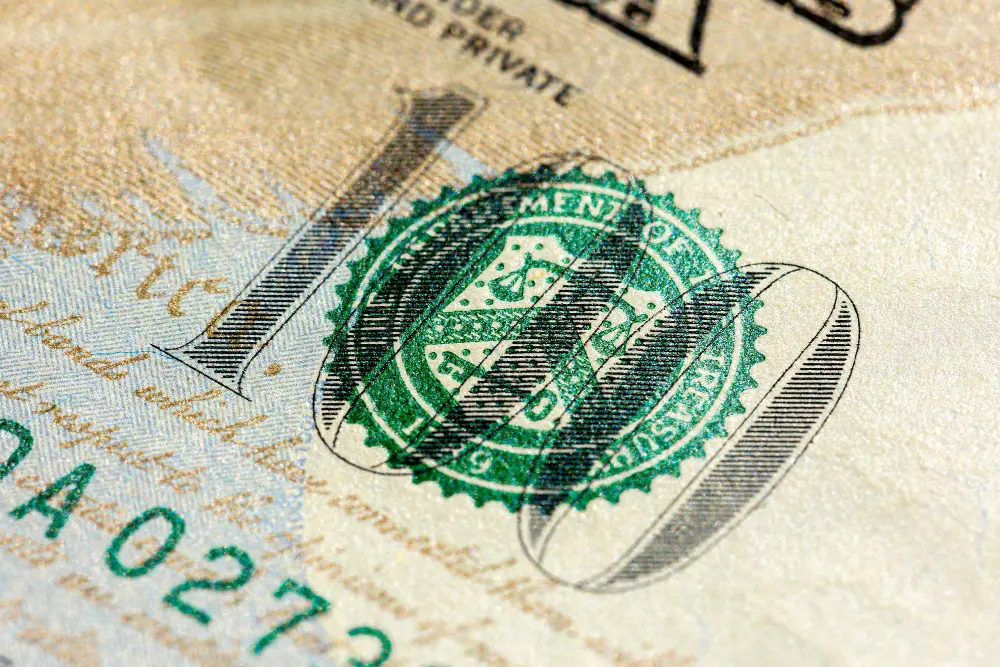Romania’s government has enacted a comprehensive fiscal consolidation package worth approximately 5% of the country's GDP in 2026. The measures – primarily tax hikes and some spending cuts – aim to rein in Europe’s largest deficit.
The short-term pain is significant: economic growth is set to quasi-stagnate in 2025, inflation will increase into the high single digits, and unemployment may rise. Yet, if implemented fully, the package puts public finances on a more sustainable path, narrowing the budget deficit and possibly reversing the credit rating story.
Beyond that, other silver linings will emerge down the road: sharply lower twin deficits, the groundwork for structural reforms, increased EU fund inflows to support investment, and restored market confidence, all of which could lay the foundation for more balanced growth.
The National Bank of Romania (NBR) is expected to keep interest rates on hold in 2025, balancing inflation risks against a fragile economy.
A necessary fiscal turnaround
Romania is undertaking its most ambitious fiscal consolidation since the Global Financial Crisis, in response to years of deteriorating public finances. In 2024, Romania recorded the worst budget deficit in the European Union at 9.3% of GDP, which prompted a clear mandate for correction.
The new government, led by Prime Minister Ilie Bolojan, moved decisively in July 2025 to adopt a comprehensive fiscal package in an effort to restore macroeconomic stability, rebuild market confidence, avoid EU sanctions under the Excessive Deficit Procedure and avoid a rating downgrade. The package was presented to Parliament with backing from the ruling coalition’s large majority.
The fiscal adjustment is broad-based, combining revenue measures with expenditure restraints. In total, the package is estimated at roughly 5% of GDP spread over the second half of 2025 and 2026. More than half of the fiscal adjustment is scheduled for 2026, building on initial steps taken in the second half of 2025 (worth about 1.2% of GDP) and followed by more substantial measures in 2026 (around 3.7% of GDP).
The strategy leans slightly more on boosting revenues – at 2.5-2.6% of GDP – than on cutting expenditures. Key elements include:
- VAT and excise tax hikes: On 1 August 2025, the standard VAT rate will rise from 19% to 21%, and reduced VAT rates (previously 5% and 9%) will be unified at 11% for many goods. Excise duties on fuels, alcohol and tobacco jump by 10%. These indirect tax hikes alone are expected to generate about 1.2% of GDP in additional revenue by 2026, but will also cause a one-off upward shift in the price level.
- Income and other tax measures: A 10% healthcare contribution will be levied on public pensions above RON 3,000/month, yielding about 0.2% of GDP. The dividend tax will increase from 10% to 16% starting in 2026, and a special tax on bank sector gross revenues will be doubled from 2% to 4% starting in 2025. Higher gambling taxes, a reform of property taxes, an increase in road tolls, and updates to royalties on state resources round out the revenue side for next year. In aggregate, authorities expect roughly 2% of GDP in extra revenues from these measures in 2025-26.
- Public wage and pension freeze: On the spending side, the government will freeze public sector wages and state pensions for 2026. This is a significant move given that such outlays had grown rapidly in recent years. The wage/pension freeze is projected to save 0.9% of GDP (government estimate) up to possibly 1.5% (our estimate) by 2026. Additionally, various public sector bonuses and allowances will be cut or capped. The government also plans to reduce public sector headcount and merge certain agencies, although these reforms will unfold over a longer horizon.
- Cuts to investment spending: As an immediate stop-gap, public investment budgets for 2025 are being trimmed by about 0.5% of GDP. While capital spending is typically the easiest item to slash, it can hurt growth potential. Officials hope to compensate with the better absorption of EU funds. Beyond 2025, the intention is to reprioritise investment rather than make permanent cuts, so that growth-supportive projects can continue to be implemented.
- Further reforms in stages: The July 2025 package is just the first in a series. The government has signalled two additional sets of measures: a second package by end-July and a third by end-2025. These future steps aim to tackle structural issues such as “special” state pensions, restructuring inefficient state-owned enterprises and local administrations, overhauling self-financed government institutions, and so on. Such reforms, required under EU Recovery and Resilience Facility (RRF) milestones, could yield fiscal savings beyond 2026 and improve public sector efficiency. Together, the multi-stage consolidation effort is reminiscent of the painful 2010-11 fiscal tightening (undertaken during an IMF program), underscoring the depth of Romania’s current fiscal challeng
Macroeconomic impact: short-term pain for medium-term gain
Growth: from fragile to frail. The fiscal squeeze comes at a time when Romania’s economy is already losing momentum. Real GDP growth in 2025 is flirting with stagnation after a meagre 0.8% advance in 2024. The new measures are likely to dampen demand throughout the year.
Private consumption looks set to sputter as higher taxes (especially VAT) cut into disposable incomes and as public sector employees face wage freezes and lower bonuses and allowances. Investments financed from the national and local budgets may also take a hit. Consequently, we have lowered our 2025 growth forecasts from 0.8% (previous baseline) to 0.3% today.

In other words, the economy could flirt with stagnation in 2025, with risks of an outright mild recession if any additional shocks occur. The combination of fiscal tightening and weak confidence means even this modest growth outlook has downside risk. Unemployment, currently around 5.5%, could rise toward 6.0% as private firms and the public sector retrench. Consumer surveys already show deteriorating employment expectations among households.
Looking ahead, a mild recovery is expected in 2026, but the rebound will be constrained. We estimate GDP growth of 1.7% in 2026. This subdued trajectory reflects the lagged impact of fiscal consolidation (some measures, such as pension and wage freezes, higher dividend taxes and increased property taxes come into effect in 2026), as well as generally weaker domestic demand. Some support should come from EU-funded investments and a better external environment.
Inflation: a one-off spike, then a downward path. Romania enjoyed a period of disinflation between 2023-24, but the new tax measures have altered the near-term price outlook. In July this year, the removal of electricity price caps began boosting utility bills. In August, the VAT hike will come into effect, alongside higher excises on fuel, alcohol and tobacco. These tax changes are essentially a one-time step-up in the price level, but they will register as a burst of higher year-on-year inflation for several months. Basically, we see an “inflation hump” forming over the next 6-9 months, with inflation above 8% between September and October and marginally below that in December.
Crucially, however, this inflation spike is expected to be transitory. By late 2025 and into 2026, inflation should resume a downward path. Base effects will kick in mid-2026, and softer aggregate demand will also dampen underlying price pressures. The NBR’s inflation target (2.5% ±1) remains far off, but by the end of 2026, inflation could fall close to 4.0%, according to our projections. Policymakers will need to keep expectations anchored through this volatile period.

Employment and confidence: The austerity measures and inflation spike are likely to weigh on consumer and business confidence. Surveys already indicate worsening sentiment – consumer confidence has been deteriorating since early 2025, as people brace for tax hikes and spending cuts. Businesses, too, may turn more cautious on hiring and investment given weaker demand and higher costs.
The labour market, which had been relatively tight, is expected to loosen somewhat. The unemployment rate (5.4% as of mid-2025) could rise toward the 6.0% mark over the next quarters. Still, there is hope that robust EU-funded projects and private sector resilience in export-oriented sectors might absorb some of the workers affected by public sector austerity.
Moreover, the government’s inclination to favour tax hikes over mass layoffs means the employment impact is somewhat cushioned (many public workers will see wage freezes rather than job losses). Overall, an uptick in unemployment is expected in 2025, with stabilisation in 2026, assuming growth recovers modestly.
Public finances: from red to reasonable
Budget deficit trajectory: The primary goal of the fiscal package is to bend the deficit curve downward. Romania’s budget shortfall was 9.3% of GDP in 2024, and without policy action, the deficit in 2025 would likely have stayed close to 9.0%, perpetuating an unsustainable path.
Mechanically, most estimates of the fiscal package impact suggest the deficit could be trimmed to about 7.5-7.8% of GDP in 2025, and improve further to roughly 6.0-6.2% of GDP in 2026. After accounting for likely second-round effects (such as slightly lower tax revenues due to slower growth), we maintain our previous estimates of a 7.5% deficit in 2025 and 6.4% in 2026. While the deficit numbers will still look big, the trajectory is what matters most, and we believe that, as things stand at this moment, the government appears to have planted the seeds for a sustainable medium-term deficit reduction path.

The European Commission and EU finance ministers have cautiously welcomed this adjustment. In early July, the Ecofin Council noted Romania’s renewed commitment and gave the government until October 2025 to demonstrate effective deficit reduction measures. The positive feedback from Brussels reduces the risk of EU sanctions (such as suspension of certain EU funds) that were looming if no action was taken.
Public debt and financing: Even with smaller deficits, Romania’s public debt will continue to rise in the near term, though at a slower pace. Gross government debt stood at about 55% of GDP in 2024. Under the new consolidation path, debt is now expected to peak around the 60-63% of GDP range by 2026, rather than spiralling toward 70%. Importantly, investor appetite for Romanian government bonds has strengthened on news of the fiscal package. Yields, which had been elevated on fears of fiscal slippage, have eased as markets price in reduced borrowing needs in the future and lower downgrade risk. Romania’s Ministry of Finance should find it a bit easier to finance the deficit, though a 7.5% of GDP gap in 2025 still means heavy issuance. In this context, the government is also hoping to tap into EU funds (grants and loans) to finance productive investments, which would reduce the pressure on the national budget.
Current account and external balances: Romania’s twin deficit challenge extends to its large current account deficit, which was about 8.3% of GDP in 2024. A high current account gap has been a persistent vulnerability, reflecting Romania’s propensity to import more than it exports, especially during consumption booms. In the short term, the fiscal tightening may help narrow the external deficit slightly by cooling import demand. However, we think that improvements are likely to be relatively modest: we still project the current account deficit in the 7.5-8.0% of GDP range in 2025, easing toward perhaps 6.5-7.0% by 2026.

Credit rating implications: A major motivation behind Romania’s fiscal pivot is to avert a downgrade by the credit rating agencies. Romania’s sovereign credit rating is currently on the lowest rung of investment grade, with Fitch, S&P, and Moody’s all having a negative outlook. The agencies had signalled that without credible fiscal consolidation, Romania risked being downgraded to “junk” status, which would raise borrowing costs and deter investors. The new package has likely eased these concerns. Of course, execution will be key – any slippage could reignite downgrade fears. But for now, the fiscal package has probably bought Romania some goodwill with investors and rating officials, and, dare we say, a revision of the outlook to stable might not be completely off the table even for this year. Maintaining investment-grade status is crucial for Romania to keep financing costs under control, especially given its still-large financing needs.
Monetary policy: NBR to hold firm
The NBR faces a complex backdrop: inflation is surging in the short run due to tax hikes, while growth stalls. The central bank’s challenge is to prevent the temporary inflation spike from seeping into sustained inflation expectations, without choking an already weak economy. In this context, the NBR has signalled a holding pattern on interest rates. It kept its key policy rate at 6.50% in the July 2025 meeting and is expected to maintain that rate throughout the year. Essentially, we think that the central bank will “look through” the one-off inflation bump caused by VAT and excise hikes, treating it as a shock that monetary policy need not react to by hiking rates. At the same time, the Bank wants to avoid any premature easing that could de-anchor expectations.
Essentially, caution is the watchword. We think that this means no cuts until 1Q26. Starting with the second quarter of 2026, if disinflation is on track, we see 100bp rate cuts until the end of the year, taking the key rate to 5.50%, which would still leave interest rates relatively high in real terms but provide a bit of stimulus to support the economy. In the meantime, the NBR will use other tools to carefully manage liquidity in the banking system. Over the past months, the central bank has drained excess liquidity to fight currency weakness; going forward it may allow liquidity to increase slightly, which could nudge the short end of market rates down towards the deposit facility. This would be a subtle form of accommodation without an official rate cut.
On the FX front, there are signs that the NBR might tolerate a somewhat higher degree of volatility for the leu in 2025, with a possible line in the sand around the 5.10 area on the way up. Given the tight rope it must walk on in 2025-26, we believe that the relative FX stability will remain a central focus for the Bank.
Overall, monetary policy is set to remain steady: no hikes (as the fiscal tightening is doing the heavy lifting to cool the economy), but no cuts until the storm of price shocks passes and inflation relief is in sight.
Risks and silver linings: execution, EU funds, and reforms
Implementation risks: Crafting a bold fiscal plan is one thing; executing it is another. While the fiscal plan is comprehensive, its execution may face challenges, including resistance from affected groups such as public sector unions, pensioners, and businesses. A key risk is policy dilution – as the fiscal laws went through Parliament there were already pressures to carve out exemptions or delay certain steps. Although the ruling coalition holds a strong majority, internal tensions could arise under strain. The opposition has already attempted a no-confidence vote and is likely to continue leveraging public dissatisfaction. Additionally, the administrative capacity to enforce tax changes and spending controls will be tested. At best, Romania’s track record on tax collection and budget discipline has been mixed, suggesting that consistent implementation may prove difficult.
Economic and social risks: The consolidation will inevitably have some social costs. Public wage and pension freezes, plus higher VAT will hit consumers across the board. There is a risk that the economic slowdown could be sharper than expected – for instance, if consumers drastically cut spending or if businesses facing new taxes slash investment. In a worst-case scenario, Romania could tip into a technical recession, which would ironically hurt tax revenues and make deficit targets harder to hit (a fiscal self-correction trap).
Some cushioning is expected from EU funds and the private sector: the EU Recovery Plan and other structural funds can finance projects that stimulate demand without burdening the national budget. Indeed, one silver lining is that the fiscal austerity might expedite the use of EU money as a substitute for domestic spending. The fiscal plan’s alignment with EU recommendations is anticipated to unlock the next RRF tranche of €3-4bn by early 2026. Maximising the absorption of EU funds is thus critical as it can ease short-term pressures and contribute to growth, while enabling fiscal adjustment. In essence, Brussels’ money can act as a countercyclical buffer if Romania can pull it in and deploy it efficiently on infrastructure, green investments, and other productivity-enhancing areas.
Opportunities from reform: Another aspect of the consolidation drive is that it goes hand-in-hand with structural reforms long promised but seldom delivered. By tackling things like special pensions, streamlining bloated agencies, and improving state-owned enterprise governance, Romania could emerge with a leaner, more efficient public sector. This would not only save money but also improve the business climate and public services in the long run.
These “public sector optimisations” are part of the government’s broader plan and, if fully executed, represent a structural silver lining: Romania might finally address some of the chronic issues that have hampered its fiscal flexibility. Moreover, adhering to the reform milestones tied to the RRF not only ensures the flow of EU funds but could also modernise institutions, for instance, by digitising tax administration and improving transparency. In the medium term, such reforms could consolidate Romania’s potential growth rate, meaning the economy can grow faster without generating inflation, thus helping to break the cycle of deficit spending.
Conclusion
Romania’s newly adopted fiscal package marks a crucial step toward addressing the country’s macroeconomic imbalances, while sending the signal that fiscal discipline is again a priority. While the adjustment will bring challenges – such as slower economic growth, rising prices, potential job losses, and tighter public spending – the long-term benefits include a more stable and more balanced economy and sustainable public finances.
The package’s credibility is strengthened by the alignment with the EU, increasing the likelihood of successful implementation. In the balance of risks and opportunities, much will depend on execution. Assuming success, Romania could emerge from this period of adjustment on a firmer footing: deficits heading down, inflation back under control, and the economy ready to accelerate with the tailwind of EU-funded projects.

